QuestionI've had my pet potbelly "Lulu" for almost two years now and me and my family have fallen in love with her, but she has some attitude problems.She is sweet as can be until she meets someone new or wants food...then she charges at me/guests with her mouth open and barks, sometimes bites. Everyone who meets her is soon terrified. I read a potbelly pig behavior book and i have tried everything they suggested however she is still having these problems. She is 73 pounds now and CANNOT keep doing this, i want everyone to love her as much as i do. What training method can i use/any suggestions on aggression?
AnswerIt is not uncommon for pampered house pigs to develop an attitude. We call it "Spoiled Pig Syndrome". Pigs reach emotional maturity and adulthood at about age 2, and that's often when SPS becomes a problem.
Pigs see the world as a "ladder", with each pig, pet and person having his or her own "rung". Piglets know they are small, weak and vulnerable, so they are content to be pretty low on the ladder. When they reach adulthood, they naturally want to move up the ladder. This urge is expressed in behavior that people call aggressive. It really isn't anger or aggression, the pig is just trying to let everyone know that the pig is in charge, or thinks he is at any rate.
When pigs live together naturally in a herd, they display dominance by making other pigs move. For example, one pig might be sleeping under a tree. The top pig will walk over, wake the sleeping pig, make them get up and move away from the tree. The top pig may or may not take over the spot. Because the issue was not about the spot, it was about the top pig being able to tell the lower pig "Move it!".
So the trick is to teach the pig, using pig language, that people are on the rungs over pigs. People are the herd leaders.
From now on, no random treats. Her only food should be her meals, her grazing time, and her training treats. For every treat, she must do a trick like sit or spin. A simple trick is a huge help in getting the behavior under control.
Trick training also teaches the pig that the person is in charge. The pig and person learn each other's body language and the pig learns to trust and obey the person. Every person in the family should do at least a few minutes of trick training, so the pig learns to trust and obey everyone in the household.
At mealtime, arm yourself with a sorting board, or any object you can use as a shield if necessary. Garbage can lids and plastic laundry baskets work well. Make her sit or spin or both before giving her the meal. If she charges, use the board to push her back a few steps.
The first time you do this she will NOT be happy. Be prepared for this. From her perspective, charging has always worked for her. She charged you for food and got it. She charged guests to keep them out of her territory and it worked. Now, all of a sudden, it's not working! So, she will most likely charge harder. To her, it makes sense.
Do not let this discourage you. You are telling her in pig language that she can understand that she is no longer on the top rung. She gets the message.
Never feed her after she charges, feed her after she sits or spins.
Make her move throughout the day, just as a dominant pig would make a submissive pig move. Never step over or around her, make her move out of your way. At random times for no real reason, make her move away from where ever she is. If she's napping by the sofa, make her get up and take a couple of steps away. This program is called Move the Pig or MTP.
Every person in the family needs to participate in this, every person must move the pig.
Use this same program with guests. Start with one guest who is not easily frightened. Arm them with treats and a board. Bring the guest in, then the pig. Have the guest make the pig do a trick or two, like sit or spin, and then give the pig a treat. End the visit quickly. Hopefully the guest will never need the board and hopefully piggy won't have a chance to charge. What should happen is a short, pleasant interaction where the pig did a few treats, behaved well, and got a reward. Repeat this with a longer visit after the tricks. When piggy feels comfortable with the first guest, start over with a new guest.
If the pig charges, the guest should use the board to make the pig take a step or two back. Again, because charging has always made guests leave before, the pig will most likely think she's just not charging hard enough and will try again.
Never let your pig play with any person's feet. The feet make the body move. Pigs can make people move by pushing or nosing at their feet. Then what has happened? The pig has made the person move, the pig is now dominant and this is not the correct message. It gives the poor pig mixed signals. The best thing to do is never let piggy nose at people's feet, if piggy doesn't nose at feet piggy will not get the wrong signal.
Consistency is key. Every person must follow the training plan all the time 100%. No treats except as rewards. Move the pig often. No food when charging, pig must sit or spin to get a meal. Time is another factor, pigs learn quickly but unlearn very slowly, if at all.

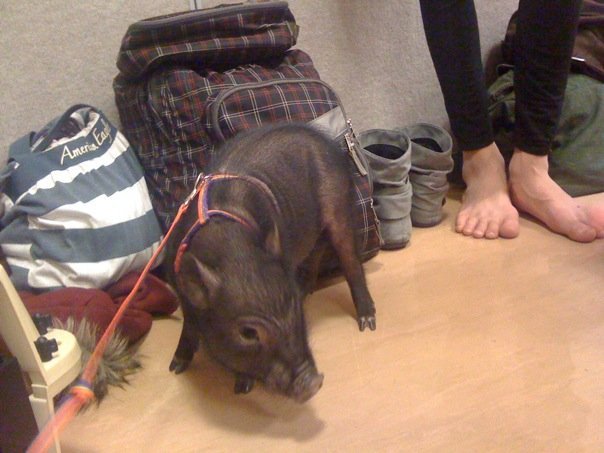 getting my PBP neutered
Question
Fred Astaire
My mini PBP is 4months old, latel
getting my PBP neutered
Question
Fred Astaire
My mini PBP is 4months old, latel
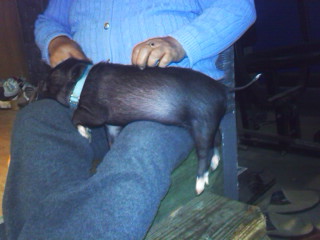 weight/height of my pig
Question
Chloe
I have a four month old female potbelly
weight/height of my pig
Question
Chloe
I have a four month old female potbelly
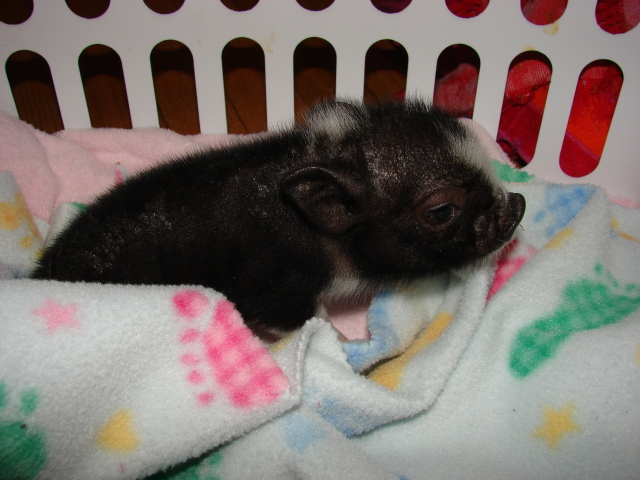 Orphan piglet
QuestionQUESTION: I also sent this to the other experts
Orphan piglet
QuestionQUESTION: I also sent this to the other experts
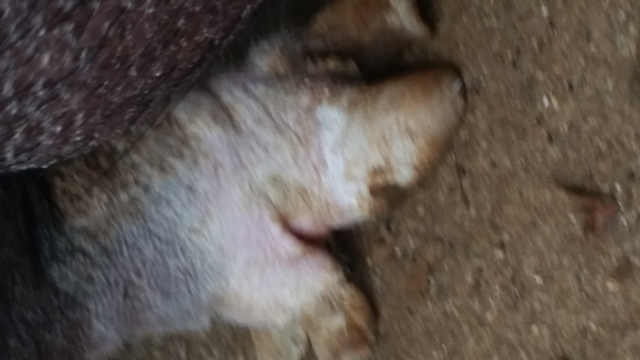 my 3 year old pot belly pig
Question
Miss. Piggys Nails Miss. Piggy
My
my 3 year old pot belly pig
Question
Miss. Piggys Nails Miss. Piggy
My
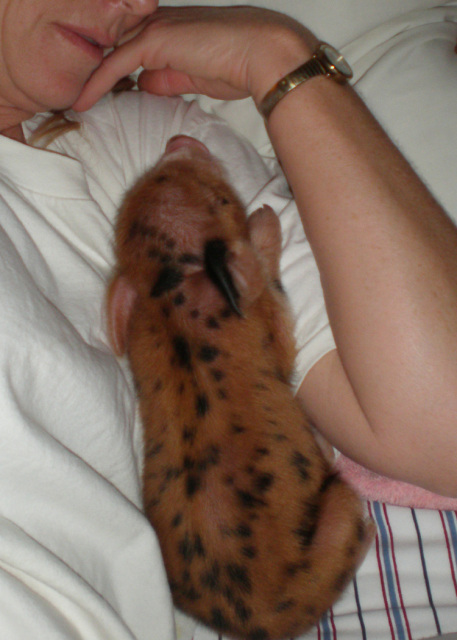 orphaned wild piglet
QuestionQUESTION: Can I follow your suggestions even th
orphaned wild piglet
QuestionQUESTION: Can I follow your suggestions even th